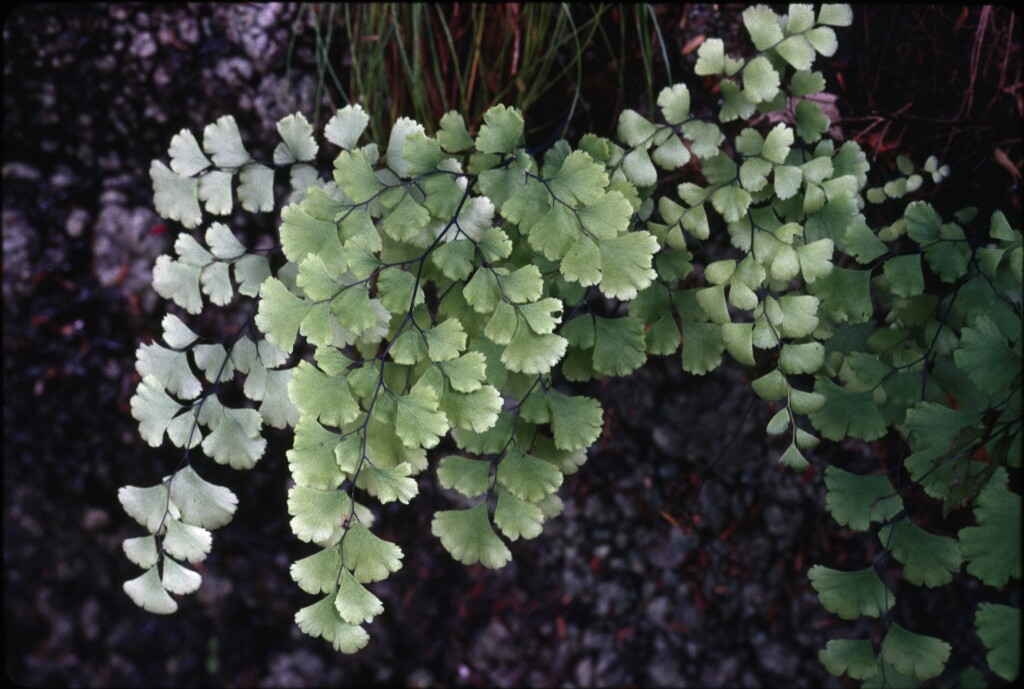Adiantum capillus-veneris
L. Dainty MaidenhairRhizome creeping, short, relatively coarse, covered with scales with long-tapering tips. Fronds clustered, erect to spreading, 3–60 cm long. Stipe long, slender, brittle, dark brown to purplish-black, smooth; scales near base, light brown, shiny. Lamina ovate, 2–3-pinnate, mid-green, delicate, glabrous; rachises slender, very dark. Pinnae with slender stalks, distant; pinnules with fine, almost centrally attached stalks, wedge-shaped, 8–20 mm long, 7–23 mm wide, outer edges rounded, shallowly to deeply incised, finely toothed. Sori 4–10, relatively large, at apex of lobes causing them to appear truncate, covered by oblong-oval reflexed leaf flap.
VVP, GipP, Gold, HSF. Also WA, SA, NT, Qld, NSW. Tropical to subtropical countries. Rare in Australia. In Victoria known only from several isolated localities: a 1975 collection from near Bendigo, several collections from near Cape Schanck (first collected at the site in 1981), a 1997 collection from Hawthorn Railway Station in Melbourne, and a 2016 collection from Crossley near Warrnambool (where occuring on limestone escarpment above a creek). There is also a report from Plenty River Gorge near Greensborough, but this is not substantiated by a herbarium specimen. There are also several specimens collected in 1925 from Evelyn, and a 1934 collection from Greenwald (near Heywood), but the origin status of these is unknown. Often growing on calcareous soils. It is unclear whether some populations in Victoria are native and others naturalised, or whether all populations are naturalised.
Entwisle, T.J. (1994). Ferns and allied plants (Psilophyta, Lycopodiophyta, Polypodiophyta). In: Walsh, N.G.; Entwisle, T.J., Flora of Victoria Vol. 2, Ferns and Allied Plants, Conifers and Monocotyledons, pp. 13–111. Inkata Press, Melbourne.
 Spinning
Spinning




